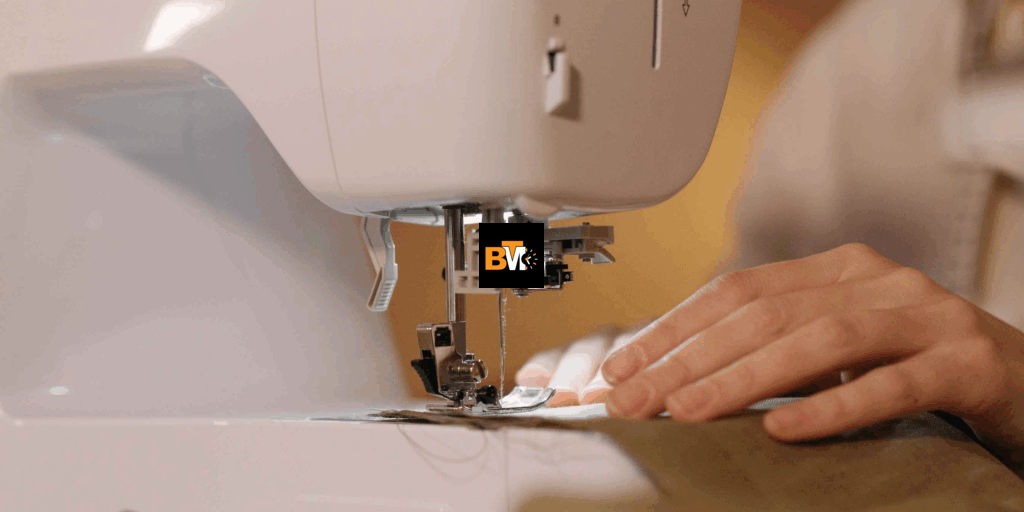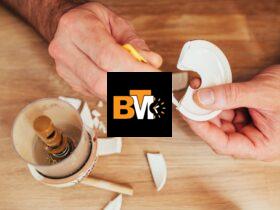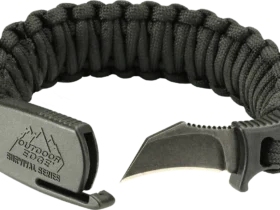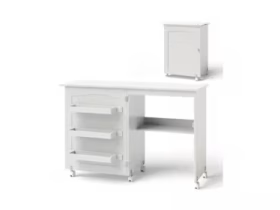Sewing your own rain jacket can be a fun and practical DIY project—especially when you want a jacket that fits perfectly and keeps water out. But the key to making a durable, water-resistant jacket lies in choosing the right needle. A regular sewing needle won’t do the job well on technical fabrics like nylon or polyester. In this guide, you’ll learn exactly what needle to use, how to avoid common mistakes, and what tools make the process smoother.
What Needle for Sewing Rain Jacket?
When sewing a rain jacket, the needle you use plays a major role in whether your seams hold or fall apart. Rain jackets are typically made from materials like ripstop nylon, Gore-Tex, or coated polyester, which are tougher and more slippery than regular cotton fabric. Using a standard universal needle might not penetrate the fabric well, or worse, might cause skipped stitches or even tear the material. That’s why it’s essential to use a needle specifically made for synthetic and waterproof materials.
A microtex needle is the most commonly recommended option for sewing rain jackets. These needles have a very sharp, fine point that can easily pierce synthetic fabrics without damaging them. They also help form tight, clean stitches which are essential for waterproof construction. You can also consider ballpoint needles if your fabric has any stretch, but for most rain jackets, microtex or sharp needles are the better option.
Why the Right Needle Matters
Using the wrong needle doesn’t just result in poor stitching—it can ruin your fabric entirely. A dull or inappropriate needle can snag, stretch, or tear delicate technical fabric, leading to leaks or a weak seam. When you use the right needle, such as a sharp microtex or jeans needle, you minimize the chance of skipped stitches and get cleaner, tighter seams. This matters more with waterproof materials where every stitch is also a potential point for water to seep in.
Rain jacket materials are not forgiving. Once punctured incorrectly, holes can’t always be repaired without compromising the jacket’s water resistance. The right needle ensures not only durability and professional results but also preserves the integrity of your fabric. It also reduces frustration for beginners who might otherwise blame their sewing machine or skills.
Best Needle Types for Rain Jacket Fabric
Let’s look at the best needle types for sewing rain jackets:

- Microtex (Sharp) Needles – These are ideal for tightly woven synthetic fabrics like ripstop nylon and Gore-Tex. Their slim, sharp point makes it easier to penetrate without leaving large holes.
- Jeans/Denim Needles – Great if your fabric is thick or multilayered. These needles are strong and can handle heavy-duty seams.
- Ballpoint Needles – Only use these if you’re working with a soft-shell or knit-style rain jacket. They’re designed for stretchy material and won’t damage fibers.
In general, most rain jacket projects will do best with a size 80/12 or 90/14 microtex needle, depending on the fabric weight.
What Size Needle Works Best?
The needle size should match the thickness of your fabric and thread. For lightweight fabrics like ripstop nylon, use a size 70/10 or 80/12 needle. For thicker coated fabrics or multiple layers, go for a size 90/14.
- 70/10 – Light synthetic layers, very thin fabrics.
- 80/12 – Standard nylon, polyester, midweight rainwear.
- 90/14 – Heavy-duty layers, seams with multiple folds or binding.
Choosing the correct size reduces wear on your fabric and ensures even stitching throughout the jacket.
Other Tools You’ll Need for Sewing a Rain Jacket
Needles are just one part of the puzzle. To get a clean and professional finish on a rain jacket, consider having the following tools:
- Walking foot sewing machine – Helps feed slippery fabric evenly.
- Teflon or non-stick presser foot – Prevents sticking on coated fabrics.
- Seam roller or clapper – Helps flatten seams without ironing (important for heat-sensitive fabric).
- Sharp thread snips or scissors – For clean cuts.
- Pins or clips – Use clips instead of pins when possible to avoid extra holes in the fabric.
Use Strong Thread
Thread strength is just as important as your needle choice. Regular cotton thread is not suitable for rain jackets—it absorbs water and can break under tension. Use polyester or nylon thread, which are durable, weather-resistant, and made to work with synthetic materials.
Look for threads labeled heavy-duty polyester, UV-resistant thread, or outdoor thread. Brands like Gutermann and Coats & Clark make suitable threads that hold up well under tension and resist mildew.
Use a Walking Foot
When working with slippery or coated fabrics like nylon or polyester, a walking foot attachment can be a game-changer. It feeds the top and bottom fabric layers evenly through the machine, which is crucial when you’re sewing long seams or multiple layers like a front zipper panel or hood. Without it, your fabric may shift or bunch up, leading to uneven stitching or puckering seams.
A walking foot also helps prevent stretching or slipping, which is common when sewing waterproof materials. It’s a great investment for beginners who want better control and consistent results.
Don’t Skip the Seam Tape
Even if you use the best needle and strongest thread, your seams can still leak if they’re not sealed. Seam sealing tape is the final and most critical step in making your rain jacket waterproof. Once your seams are sewn, apply seam tape to the inside of each seam using a heat press or iron (low heat, always test first).
There are two main types of seam tape:
- Iron-on seam tape – Easy to apply with a home iron.
- Sew-on seam tape – Requires stitching along the edge.
Seam tape prevents water from penetrating through the holes left by the needle, preserving the water resistance of the jacket. Skipping this step will almost always lead to leaks over time.
Best Fabric Types for Rain Jackets
Rain jackets are made from specific fabrics that repel water and resist wind. Understanding your fabric helps you choose the best needle and sewing method. Common waterproof and water-resistant materials include:

- Ripstop Nylon – Lightweight, strong, and tear-resistant. Common for windbreakers and packable jackets.
- Gore-Tex – A breathable, waterproof membrane layered with nylon or polyester.
- Coated Polyester – Durable and affordable. Often used in budget-friendly rainwear.
- Softshell Fabric – Slightly stretchy, with a water-resistant outer layer and soft inner lining.
- Polyurethane Laminated Fabric (PUL) – Waterproof and flexible. More common in raincoats or diaper covers.
Each fabric behaves differently under the needle. Ripstop, for example, can fray easily, while Gore-Tex requires care not to damage the breathable membrane.
How to Test Your Needle Before Sewing
Before starting your final project, always test your needle and thread on a scrap of the same fabric. Check for:
- Clean, even stitches
- No skipped stitches
- No puckering or tearing
- Tight tension and balanced top/bottom stitches
This step helps you avoid damaging your final jacket and lets you adjust machine tension, stitch length, and needle if needed.
Common Mistakes to Avoid
When sewing waterproof fabric, beginners often face these issues:
- Using the wrong needle size
- Using cotton thread
- Skipping seam tape
- Sewing too fast
- Not using a walking foot
These can cause seam failures, puckering, or make the fabric lose its waterproof ability.
Using Old or Dull Needles
Always use a fresh needle when working with coated or technical fabric. A dull needle will drag or tear through the material instead of piercing it cleanly. This can cause ugly stitch holes, skipped stitches, or weaken the jacket over time. Replace your needle after each major project or every 8–10 hours of sewing.
Skipping Practice Runs
Many new sewists get excited and dive into sewing their rain jacket without practicing on scrap fabric. But waterproof materials behave differently from cotton or muslin. If you skip test runs, you might not discover issues like skipped stitches, tension problems, or improper seam allowance until it’s too late. Taking just 10–15 minutes to test your machine, needle, and thread combo on extra fabric can save you from a ruined project.
The Bottom Line
Sewing your own rain jacket is totally possible—even for beginners—if you start with the right needle and tools. For most projects, a microtex 80/12 or 90/14 needle paired with polyester thread and a walking foot will deliver clean, strong seams. Always seal your seams with tape, test your setup first, and don’t rush the process. Choosing the proper needle isn’t just a detail—it’s the difference between a jacket that lasts for years and one that leaks the first time it rains.
With patience and practice, you’ll not only master the skill but create something uniquely functional that you can be proud of. And remember, even if you’re 10 years old, this guide is here to help you understand and succeed!







Leave a Reply